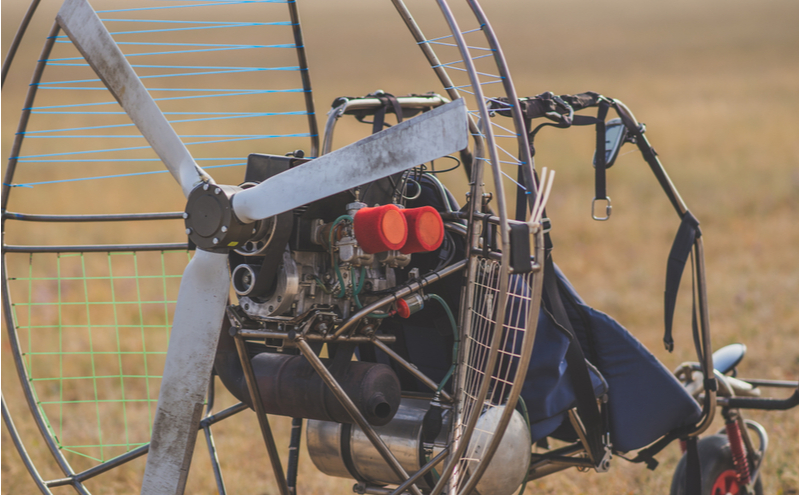You can expect an average paramotor weight to be about 50 pounds (23 kg). However, some ultra-lightweight models can weigh as low as 40 lbs (18 kg).
The total weight will also vary depending on how much fuel is in the tank. Fuel weighs about 6.3 pounds (2.9 kg) per gallon of gas. When transporting a paramotor, it’s advised to add the total wet weight with a full tank of fuel. Most paramotors feature a 3.2-gallon gas tank, which adds up to 20 pounds (9 kg).
5 Example Paramotor Weights
The following chart features example paramotor weights of specific models ranging from light to heavy. Additional details can be found on the manufacturer’s websites. Here’s the paramotor weight chart:
| Paramotor Model | Average Dry Weight |
| Adventure Pluma Atom 80 | 39.5 lbs (17.95 kg) |
| ProPulse Titan 80 | 43 lbs (19.5 kg) |
| Nitro 200 Delta XL | 47.4 lbs (21.5 kg) |
| Tornado 280 Delta XL | 49.8 lbs (22.6 kg) |
| BlackHawk AirMax 220 | 55 lbs (25 kg) |
Dry Weight vs. Wet Weight
When looking at the specs for different paramotors, the weight will also be listed as dry or wet weight. Dry weight refers to only the frame of the vehicle without fuel. When the gas tank is full, that is known as wet weight.
What Types of Materials Are Used For Paramotors?
Across the various options available, each paramotor is built from different materials on the frame that affects their overall weight. Here are the most common types of construction used to make a paramotor:
- Carbon Fiber
- Titanium
- Aluminum
To Conclude
Paramotors offer a unique experience to capture views in the outdoors. Powered paragliders contain a frame, harness, fuel tank, engine, and propeller that all contribute to its weight.
The lighter the materials used in the frame production, and the weaker the engine, generally the less your paramotor will weigh. Look for a carbon fiber frame if you want an ultra-light paramotor.
If you’re unsure about specific weights, you can check the manufacturer’s website or call them to get an exact number.

